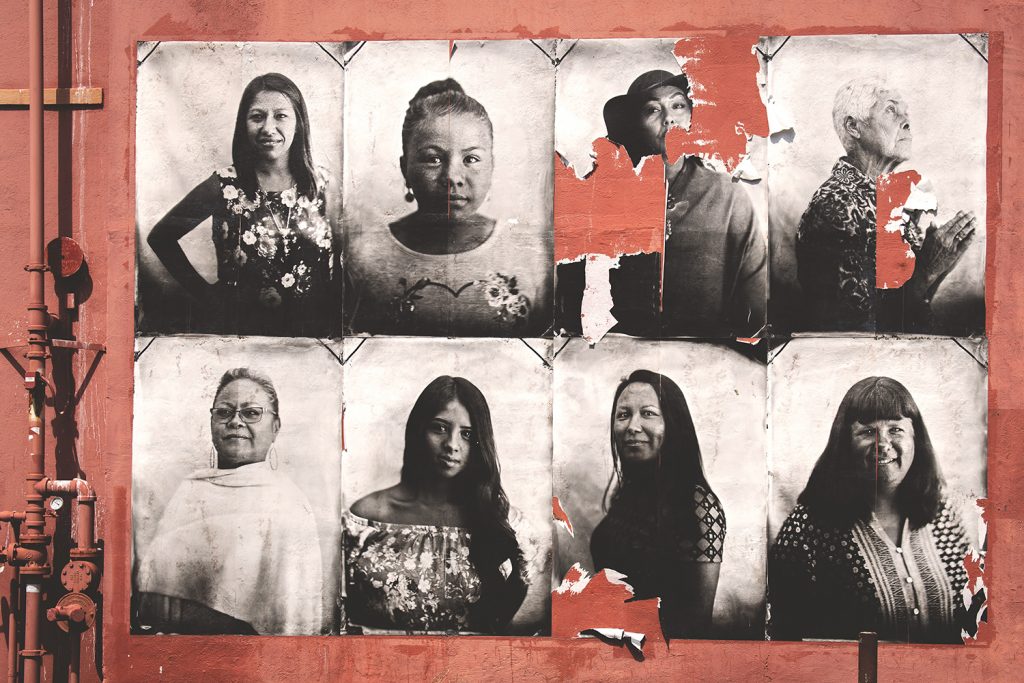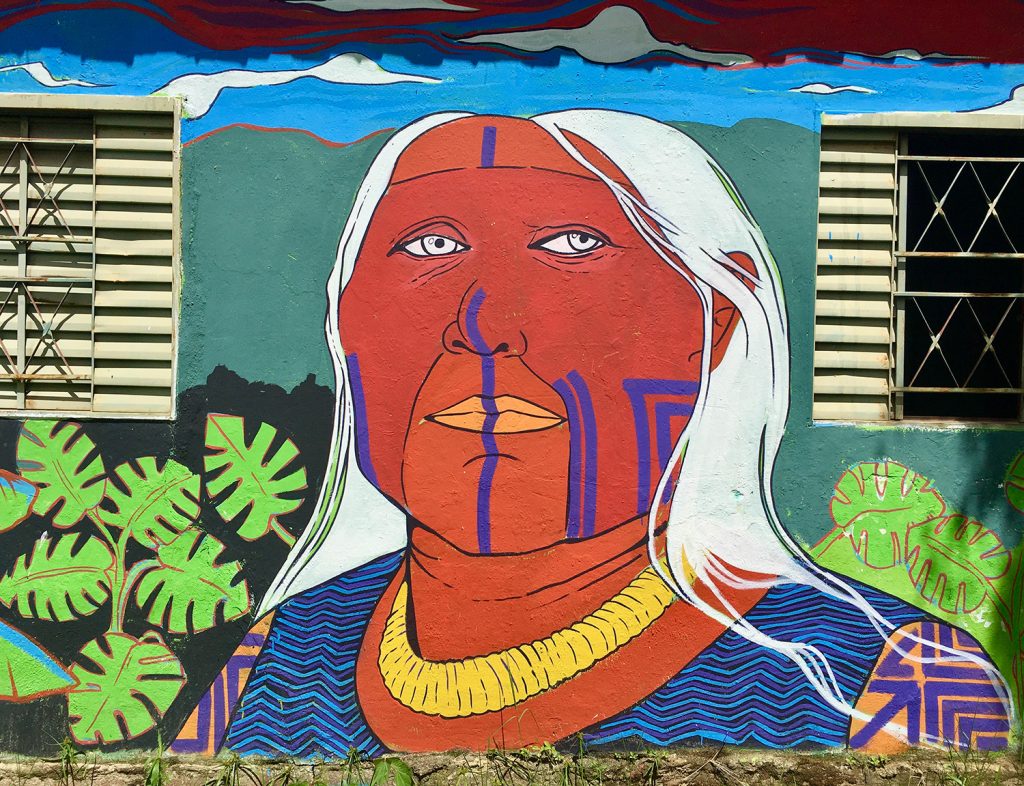

How many times have you seen an advertisement for an English teaching position that either implicitly or explicitly seeks a “native English speaker”? What ethnoracial background do you think the students and/or school administration expect when hiring an applicant for an English teaching job that is seeking a “native English speaker”? Is “native English speaker” more than simply about how one may sound, but also about how one may look the part? These questions are among the issues that we will be discussing in this second installment of a three-part series on ELT after Whiteness. In part one, found in the April 2021 issue of this magazine (Gerald, Ramjattan, and Stillar, 2021), we began to outline our collective vision for English language teaching after Whiteness has been decentered, a follow-up to one of our (Gerald’s) articles “Worth the Risk” (Gerald, 2020), which was released in the spring of 2020 in the BC TEAL Journal. The first installment focused on changes that could be made in classrooms and pedagogy, arguing that instead of merely dispensing with linguistic prescriptivism, we need to empower racialized students with the ability to challenge their (White) teachers when they are told their languaging is incorrect, a process we termed counterprescriptivism. We also argued that naming the language we are teaching as “standardized” rather than Standard English helps illustrate the constructed nature of what they are expected to learn and that other forms of English should be taught and valued equally, which would, in turn, allow for such things as an anti-racist pronunciation pedagogy that destigmatizes accents coded as racialized. In this installment, we turn our attention to a post-Whiteness version of ELT training and labor—aspects of the field which are in dire need of substantive shifts if they are to achieve the vision we are proposing in this series of articles.
A Convergence of Interests
None of our pedagogical recommendations will succeed if the way that future educators are trained and molded does not undergo massive changes. The education profession itself is White-dominant—approximately 80% White, from a recent study (National Council on Education Statistics, 2020)—and teacher training is supportive of centered Whiteness (Matias, 2013). So long as this remains true, none of our suggestions have a chance of coming to fruition. With this said, if we consider the concept of interest convergence (Bell, 1980; Milner, 2008), we know that we will need White educators to see the value in our suggestions if we are to make progress. Accordingly, we must convey to White readers that this is not an exclusionary vision but rather a vision of inclusion. Due to White folks often misinterpreting inclusionary projects that bolster representation of People of Color as being exclusionary of White people, regardless of how untrue that may be, part of the challenge will be to convey the fact that a more diverse industry benefits racialized students and colleagues, and White educators as well, by creating a more robust learning and teaching environment.
This installment is centered on training and labor, and the above ideas need to be central to any credentialing program for English language teachers. It is vital not only that all training programs, be they master’s degrees, CELTAs, or what have you, prioritize racialized and language-minoritized pedagogy and scholarship but also that this reorientation is done in such a way that White future educators feel included in the new version of the field. We contend that Whiteness does a disservice to White teachers all the same, even as it claims to prioritize them, yet too many of our training programs are still founded on the same hoary set of ideals and theories. Many of us were taught about the inner, outer, and expanding circles (Kachru, 1992), and for one of us (Gerald) at least, the concept was presented as a bold attempt at equality, but in the vision we submit to you in this article series, there would be no singular center around which all of English is meant to orbit. That is a destabilizing idea, and a messy one, but it is the only way ELT could work in a world where Whiteness has been removed from the center.

Confronting the Point of Departure
Our vision also necessitates a vigilant promotion of consciousness raising, rather than a disconscious reinforcement of a White-normative status quo. Racism and other forms of bias thrive in environments where they are not challenged. By encouraging both students and teachers to challenge biases that are embedded within such a status quo, we can assist in limiting regression to a state where Whiteness is again centered. However, being that language and race operate as co-naturalized entities, the English language is commonly, yet erroneously, associated with those who inhabit White bodies via a process known as raciolinguistic enregisterment (Rosa, 2019; Rosa and Flores, 2017). In order to subvert such widespread racial prevarications, it is crucial that any and all assumptive tethering of the English language to Whiteness is not only confronted at the aesthetic and communicative point of arrival (i.e., what the students see and hear), but also at the aesthetic and communicative point of departure (i.e., from the instructors and/or administrators themselves).
Thus, our vision for ELT is one that ultimately ideates English language education as a space where equitable representation of marginalized ethnoracial groups occurs via the contestation and abolishment of White dominance in all its forms. In doing so, we imagine a field where a diverse representation of bodies and voices are rightfully valued alongside the quality of one’s pedagogical practices, dedication to students, and passion for the language learning process. In doing so, we stress that alongside the active rejection of assumptions that frame Whiteness as an embodied ELT qualification, we also emphasize the value of equitable ethnoracial representation by encouraging and materially compensating individuals from marginalized backgrounds to recognize the immense value they bring to the ELT profession.
“Native” Speakers as Standard Bearers
While considering the value that equitable representation brings to an ELT space, we must also be mindful of the challenges that stand to impede progress toward our vision. These challenges often manifest as adoptions of a White gaze by students and teachers who, while they are not White, have become professionally invested in Whiteness due to the historical legacy of White settler colonialism. In particular, we need to confront linguistic bolstering of White supremacy and encourage both instructors and students to challenge notions of the White, English “native speaker” as the standard bearer of the English language. By doing so, we can begin to make space for adjacent discourses that confront lingering and all-too-common biases in schools and classrooms, such as anti-Blackness, that contribute to the limitation of equitable representation within the ELT profession via the framing of instructors who are not coded as White as bearing an embodied pedagogical deficiency (Ramjattan, 2015).
Additionally, it is worth problematizing the concept of a “native speaker” altogether. As Frank Ocean once asked, “What’s a god to a nonbeliever?” We do not need to be controlled by nativeness if we reject the concept. Or we can continue to pretend as though there is a neutral reality of “nativeness,” be it nation of birth or citizenship or using a language before the age of three. No matter what we tell ourselves, because of the issues we have enumerated above, the concept of the native speaker is inextricable from Whiteness. Consequently, even if an employer has learned enough not to demand this oppressive requirement from applicants, any expectations of nativeness will leave a workplace mired in the same racial hierarchies in which, as Ray (2019) explained, Whiteness itself is a credential, even if referred to by a different name. We will explore this topic, as well as other aspects of the broader ELT industry, in the third and final part of our project, due to arrive in a future issue. Before we conclude, though, we do want to issue one brief note of caution for all readers to ensure our message is clear.
A Warning
In making the above recommendations for the inclusion of a diverse array of bodies and voices in the ELT profession, we are not making a case for diversity in order to economically bolster a learning space. That is, we encourage you, the reader, not to understand the value of diversity in economic terms, similar to how many schools and teacher-education programs advertise the diversity of their students or workforces in order to better their reputations and increase their revenues. To be clear, we are not advocating for diversity so that White-dominant institutions or individuals will gain further economic and socially upward mobility from marginalized groups (Leong, 2013). Instead, we hope to stress the inherent value of these groups and how a diverse range of people and perspectives can aid and inspire students while acting as a powerful counterbalance in the decentering of Whiteness within institutions as well.
We will return with our conclusion, centered on the broader ELT industry, in a future issue of Language Magazine. Stay tuned…
Bibliography
Bell, D. (1980). “Brown v. Board of Education and the Interest-Convergence Dilemma.” Harvard Law Review, 93(1), 518–533.
Gerald, J. P. B., Ramjattan, V. A., and Stillar, S. (2021). “After Whiteness (Part One).” Language Magazine. www.languagemagazine.com/2021/05/17/after-whiteness
Gerald, J. P. B. (2020). “Worth the Risk: Towards decentring whiteness in English language teaching.” BC TEAL Journal, 5(1), 44–54. doi.org/10.14288/bctj.v5i1.345
Kachru, B. (1992). The Other Tongue: English across Cultures. University of Illinois Press.
Leong, N. (2013). “Racial Capitalism.” Harvard Law Review, 126(8), 2151–2226.
Matias, C. E. (2013). “Tears Worth Telling: Urban teaching and the possibilities of racial justice.” Multicultural Perspectives, 15(4), 187–193. doi.org/10.1080/15210960.2013.844603
Milner, H. R. (2008). “Critical Race Theory and Interest Convergence as Analytic Tools in Teacher Education Policies and Practices.” Journal of Teacher Education, 59(3), 332–346. doi.org/10.1177/0022487108321884
National Council on Education Statistics. (2020). “Characteristics of Public School Teachers.” Condition of Education. https://nces.ed.gov/programs/coe/indicator_clr.asp#:~:text=In%202017%E2%80%9318%2C%20about%2079,1%20percent%20of%20public%20school
Ramjattan, V. A. (2015). “Lacking the Right Aesthetic: Everyday employment discrimination in Toronto private language schools.” Equality, Diversity and Inclusion, 34(8), 692–704. doi:10.1108/EDI-03-2015-0018
Rosa, J. (2019). Looking Like a Language, Sounding Like a Race: Raciolinguistic Ideologies and the Learning of Latinidad. New York: Oxford University Press.
Rosa, J., and Flores, N. (2017). “Unsettling Language and Race: Toward a raciolinguistic perspective.” Language in Society, 46, 621–647.
J. P. B. Gerald is an EdD candidate at CUNY–Hunter College whose scholarship focuses on language teaching, racism, and Whiteness. You can find his public scholarship at jpbgerald.com and his excessive Twitter opinions @JPBGerald.
Vijay A. Ramjattan received his PhD in adult education and community development from the University of Toronto. His research interests pertain to the intersections of language, race, and work(place learning). He often talks about these interests on Twitter @Vijay_Ramjattan.
Scott Stillar is currently a PhD candidate in second language acquisition at the University of Wisconsin-Madison. His dissertation research investigates the ideological intersections of standardized American English and Whiteness within English language education spaces.
Ayanna Cooper, EdD, is an advocate and writer and the owner of A. Cooper Consulting. She is author of And Justice for ELs: A Leader’s Guide to Creating and Sustaining Equitable Schools (Corwin). She is the editor for Language Magazine’s Pass the Mic, a series that highlights experiences of traditionally marginalized educators and the students they serve.





